
A curious but logical feature of the salt bed huts is the floor, of clay, slightly sloping to facilitate separation of the water drained from the salt.
In the salt farm huts, the salt produced during the summer was stored so that it did not dissolve if it rained. The tools used to make salt were also stored here.

A curious but logical feature of the salt bed huts is the floor, of clay, slightly sloping to facilitate separation of the water drained from the salt.

The simple tools used in salt production. Different types of pannier were used to transport the wet salt to the hut and from the drying bed to the hut.
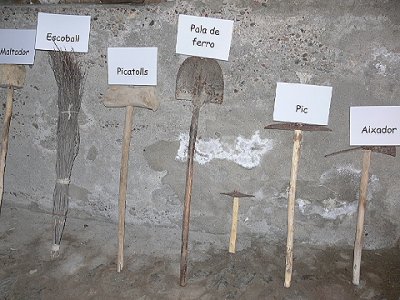
The aixador was used to lift the stones from the reservoirs and work the clay. The pala de ferro was used to clean the arcabotes (wells), to pile up the salt in the hut and put it into sacks. The picatolls was used to wet and prod the clay of the pond walls so that holes didn't appear when it was filled with water.
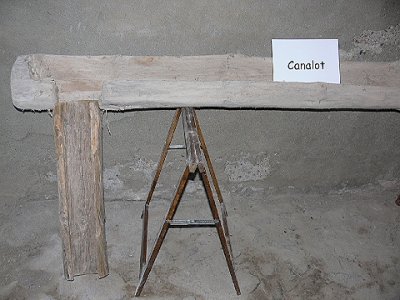
The canalots were hollowed out pine trunks used as conduits to channel the salt water all around the salt works.
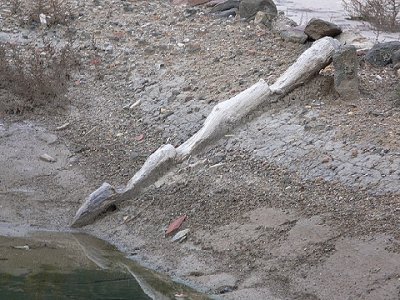
The steps for going down to the pond and covering and repairing holes in the channels.
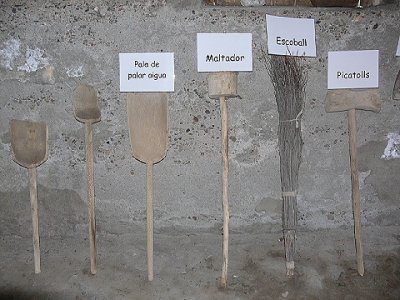
The escoballs were used to clean and rinse out the salt beds and the arcabotes, but also used to stir and spread out the water and the salt. When cleaning and rinsing out the salt bed, the water was passed from here to the arcabota using the pala de palar aigua. The maltador was for chipping at the llevers from places where the salt bed lost water or for putting new ones in.
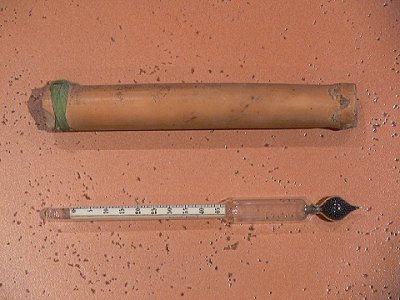
The salt gauge or scale is a densimeter that was used to measure the water's salt concentration, in degrees Baumé, and thus to know when the salt in a bed was about to precipitate.